In today’s digital landscape, Digital Product Marketplaces play a crucial role in helping creators, entrepreneurs, and businesses sell their digital products efficiently.
Choosing the right platform can significantly influence your success, from ease of use to the ability to reach a broad audience.

In this comprehensive review, we’ll explore the best digital product marketplaces available in 2025, guiding you toward the best choice for your business.
Verdict
Digital Product Marketplaces are essential for anyone looking to sell digital products successfully online.
Each platform offers unique features tailored to different needs, from easy-to-use interfaces to advanced marketing tools.
When selecting a marketplace, it’s vital to consider your specific requirements, scalability, and how the platform aligns with your overall business strategy.
By choosing the right platform, you can maximize your sales, save time, and ultimately grow your business.

What Are Digital Product Marketplaces?
Digital Product Marketplaces are online platforms where creators and businesses can sell their digital products, such as ebooks, software, courses, music, and more.
These platforms typically offer features like product listing, payment processing, and marketing tools to help sellers reach their target audience and maximize sales.
Key Features
When selecting a Digital Product Marketplaces, several key features will influence the platform’s effectiveness in supporting your digital product sales:

- Product Listing and Customization: The ability to list and customize product pages with detailed descriptions, images, and pricing options.
- Payment Processing: Secure and reliable payment gateways that support various currencies and payment methods.
- Marketing Tools: Built-in tools for email marketing, discount codes, and affiliate marketing to boost product visibility and sales.
- Analytics and Reporting: Detailed reports on sales performance, customer behavior, and marketing effectiveness to help you refine your strategy.
- Customer Support: Access to robust customer support to resolve any issues that may arise during the selling process.
What is the Best Digital Product Marketplace?
When determining the best Digital Product Marketplaces for your needs, it’s essential to consider the specific features, pricing, and user experience offered by each platform.
In this review, we selected platforms based on their comprehensive feature sets, ease of use, customer support, and scalability.
These platforms have consistently delivered value to users across different industries.
1. Gumroad
Best For: Independent creators and small businesses.
Best Features: Simple setup and ease of use.
Product Description: Gumroad is a popular Digital Product Marketplaces that allows creators to sell various digital products, from ebooks and software to music and courses.
Its user-friendly interface makes it easy for anyone to start selling online without needing technical skills.
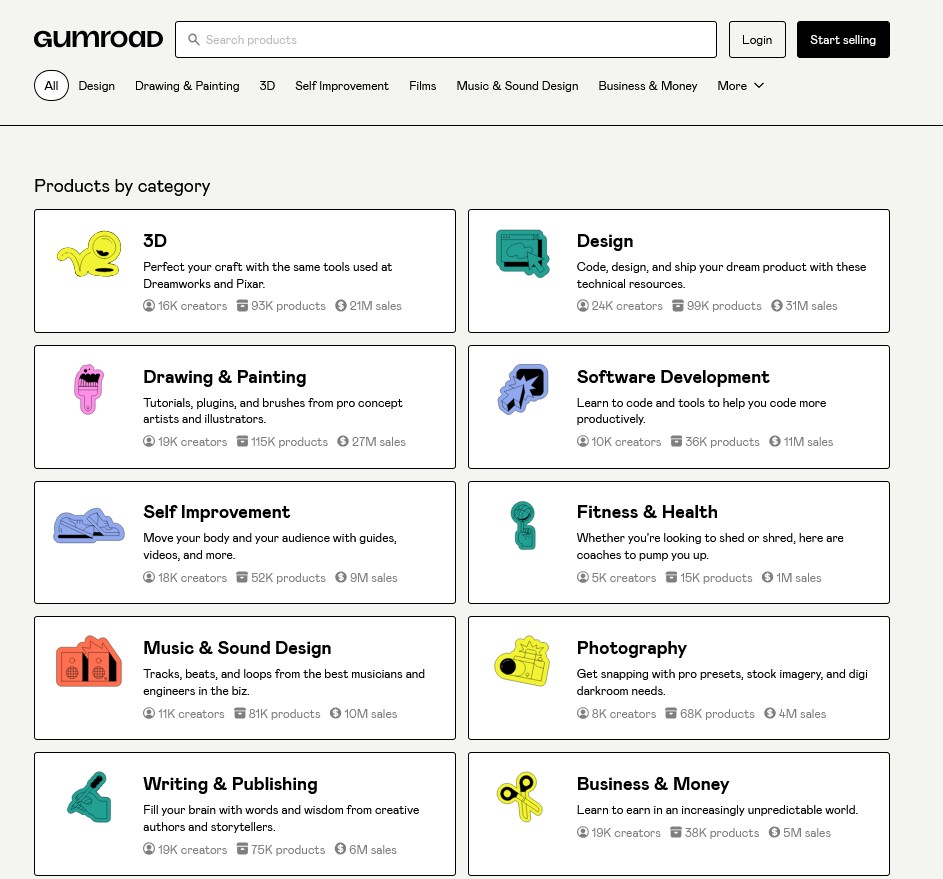
Ryan’s Advice: Ideal for creators looking for a simple, no-frills platform to start selling digital products.
Best Features for Digital Product Marketplaces
- Easy Product Setup: Quickly list products with a straightforward interface.
- Flexible Pricing Options: Offer pay-what-you-want pricing, subscription models, and discounts.
- Built-in Email Marketing: Engage with customers directly through email campaigns.
- Integrated Analytics: Track sales, customer behavior, and marketing performance.
- Global Payment Support: Accept payments in various currencies with multiple payment methods.

Product Pros and Cons
Pros:
- User-friendly interface
- Low transaction fees
- Integrated email marketing
- Flexible pricing options
- Global payment support
Cons:
- Limited customization options
- Basic analytics compared to competitors
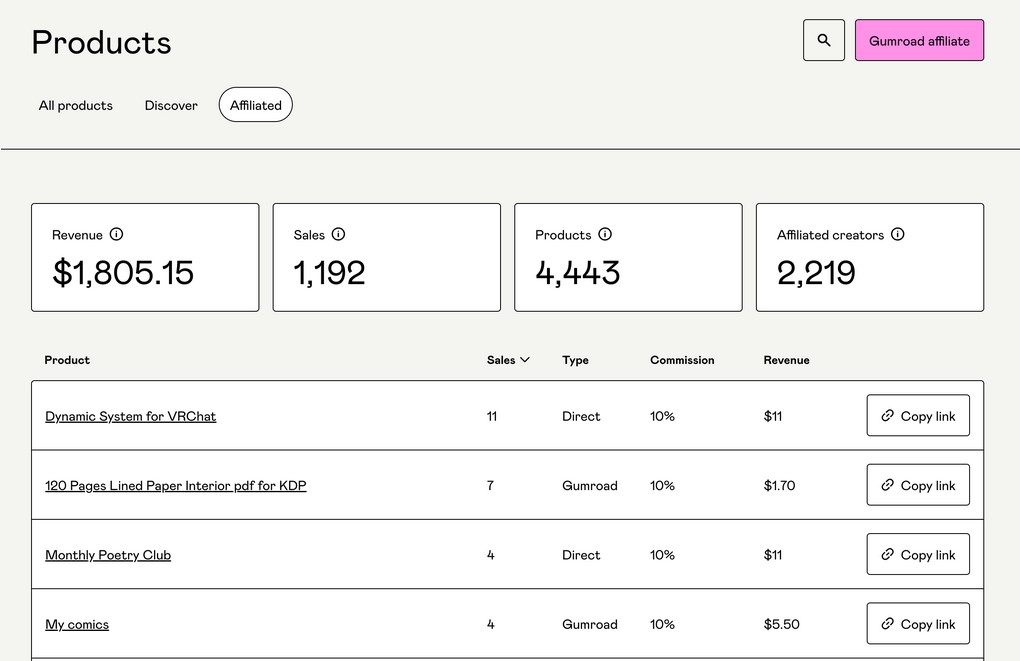
User Experiences and Case Studies
- Freelancer: A graphic designer used Gumroad to sell digital art, resulting in a 40% increase in income within six months.
- Small Business: An independent publisher grew their ebook sales by 50% using Gumroad’s built-in marketing tools.
- Musician: A musician sold exclusive tracks and albums, reaching a global audience and increasing fan engagement.
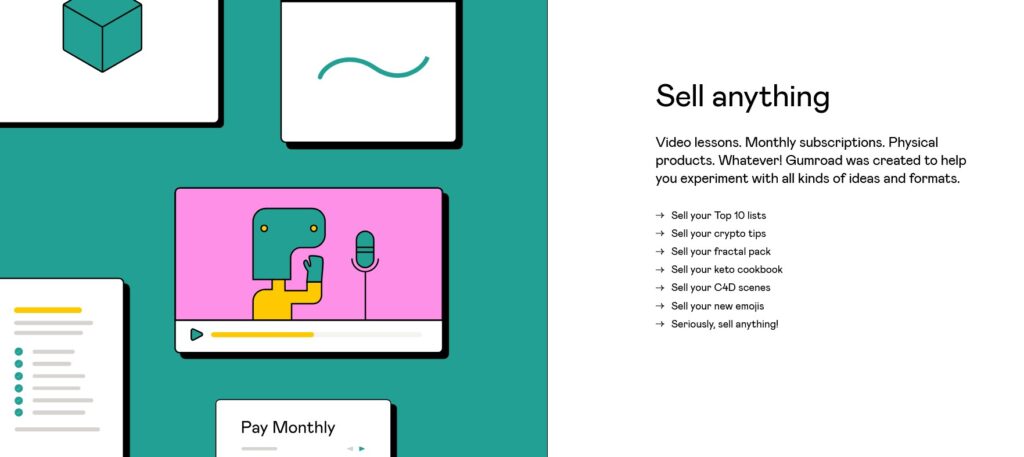
Pricing and Subscription
- Free Plan: Basic features with a 5% transaction fee.
- Pro Plan: $10/month, includes advanced analytics and custom branding.
- Premium Plan: $40/month, offers additional marketing tools and priority support.
2. Etsy
Best For: Creators and businesses selling digital and physical products.
Best Features: Large marketplace with built-in traffic.
Product Description: Etsy is well-known for its marketplace for handmade goods, but it also serves as a Digital Product Marketplaces for selling digital items like printables, patterns, and design resources.
Its established customer base makes it an attractive option for reaching a broad audience.
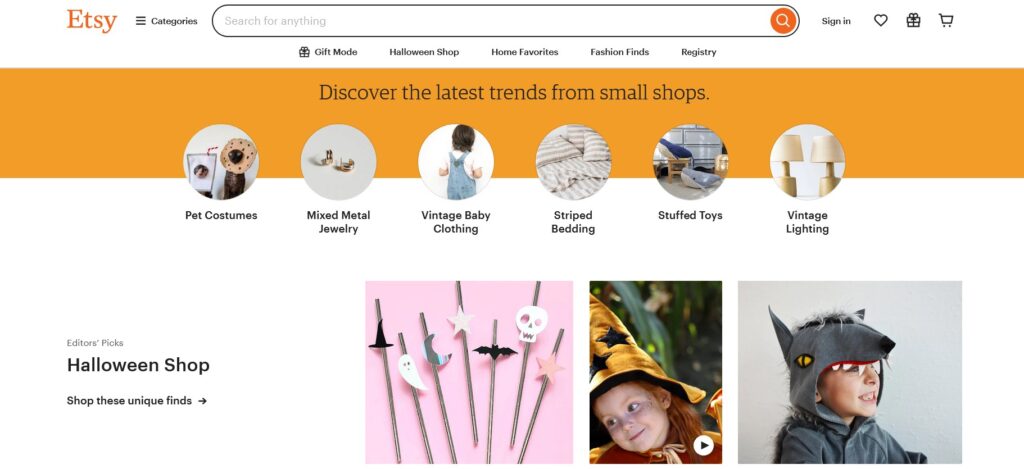
Ryan’s Advice: Great for sellers who want to tap into Etsy’s large, established marketplace.
Best Features for Digital Product Marketplaces
- Massive Customer Base: Access to millions of potential buyers.
- Customizable Shops: Personalize your storefront with branding options.
- SEO Tools: Optimize product listings for search within Etsy’s platform.
- Seller Analytics: Monitor performance with detailed analytics.
- Community Support: Access to a community of sellers for tips and advice.

Product Pros and Cons
Pros:
- Large, established marketplace
- Easy-to-use shop customization
- SEO tools to improve visibility
- Access to seller community
- Detailed seller analytics
Cons:
- Higher fees for listing and transactions
- Competitive market
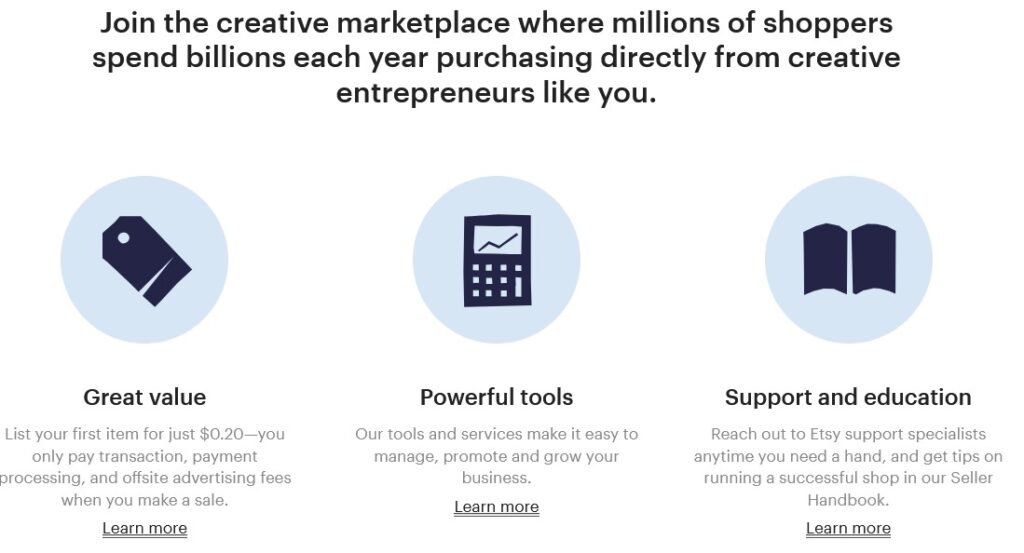
User Experiences and Case Studies
- Artist: Sold digital prints and patterns, leading to a 60% increase in sales during the holiday season.
- Craft Business: Used Etsy to reach a global audience, boosting revenue by 75%.
- Photographer: Marketed digital photo presets, leading to increased brand exposure and customer loyalty.
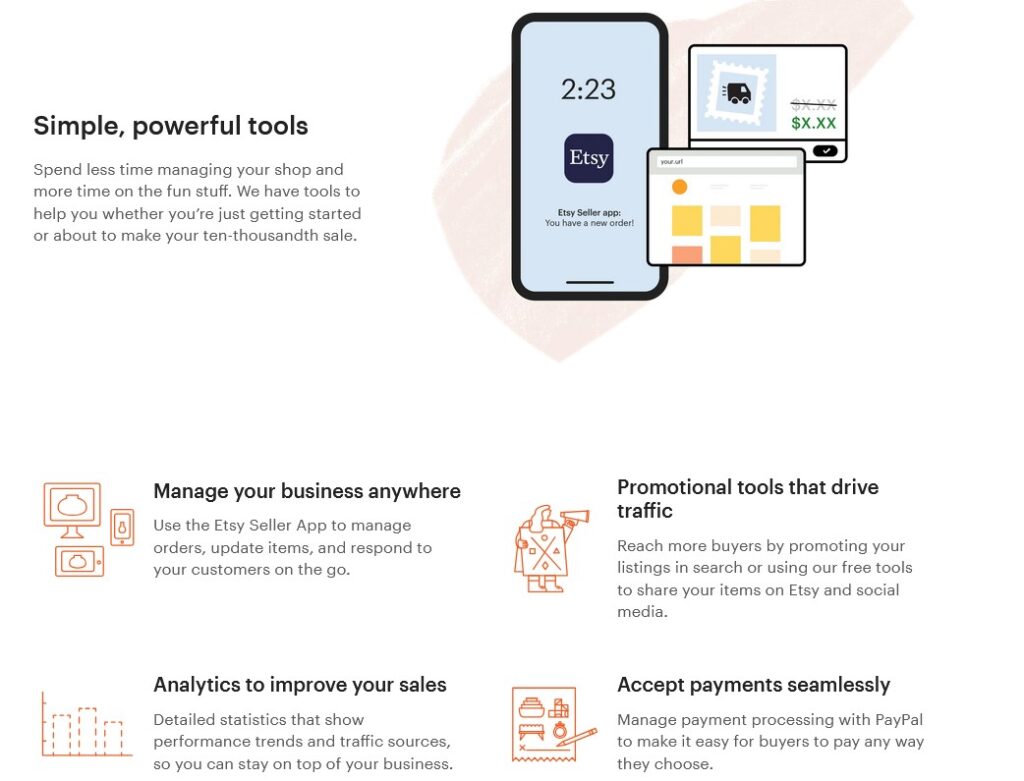
Pricing and Subscription
- Listing Fee: $0.20 per item.
- Transaction Fee: 5% of the sale price.
- Payment Processing Fee: 3% + $0.25 per transaction.
3. Podia
Best For: Selling courses, memberships, and digital downloads.
Best Features: All-in-one platform for digital products and memberships.
Product Description: Podia is a comprehensive Digital Product Marketplaces that offers a range of tools for selling online courses, memberships, and digital downloads.
With no transaction fees and an easy-to-use interface, it’s a popular choice for educators and creators.
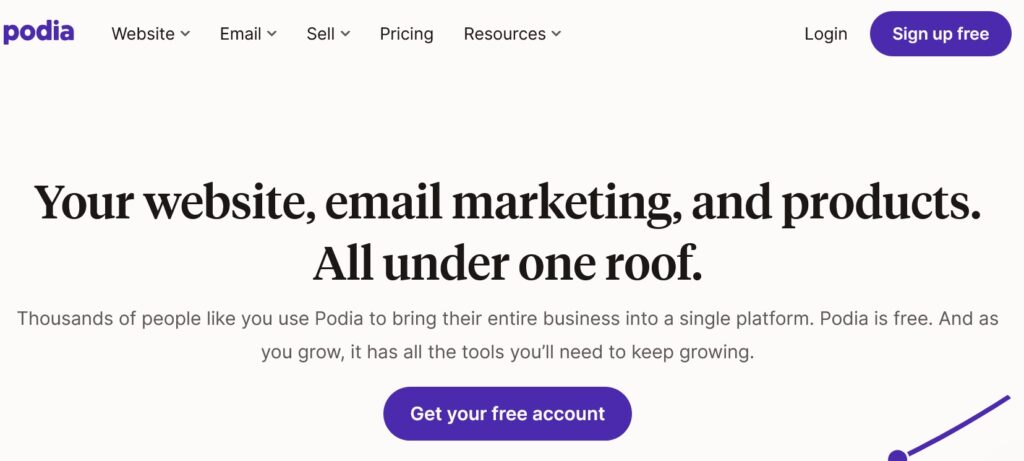
Ryan’s Advice: Perfect for educators and creators looking to build a business around courses and memberships.
Best Features for Digital Product Marketplaces

- Course Creation Tools: Create and sell online courses with ease.
- Membership Sites: Offer exclusive content through memberships.
- Digital Downloads: Sell ebooks, videos, and other digital products.
- Email Marketing: Built-in email marketing tools to engage customers.
- Webinar Integration: Host live webinars and sell access directly.
Product Pros and Cons
Pros:
- No transaction fees
- Comprehensive course creation tools
- Integrated email marketing
- Easy-to-use membership sites
- Webinar integration
Cons:
- Higher monthly cost
- Limited design customization

User Experiences and Case Studies

- Educator: Grew an online course business, increasing revenue by 100% within the first year using Podia.
- Content Creator: Sold memberships and exclusive content, building a loyal community and generating recurring income.
- Author: Marketed and sold ebooks through Podia, doubling sales compared to previous platforms.
Pricing and Subscription
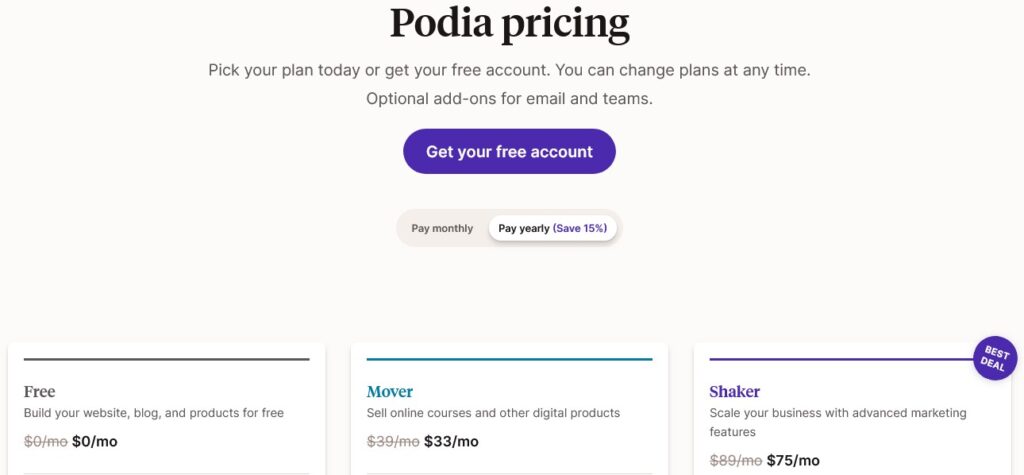
- Mover Plan: $33/month, includes all essential features.
- Shaker Plan: $75/month, adds memberships and webinars.
4. Selz
Best For: Small businesses and entrepreneurs selling digital products.
Best Features: Flexible and customizable online stores.
Product Description: Selz is a versatile Digital Product Marketplaces that allows you to create a fully customizable online store to sell digital products.
With its wide range of integrations and payment options, it’s a great choice for small businesses looking to scale.
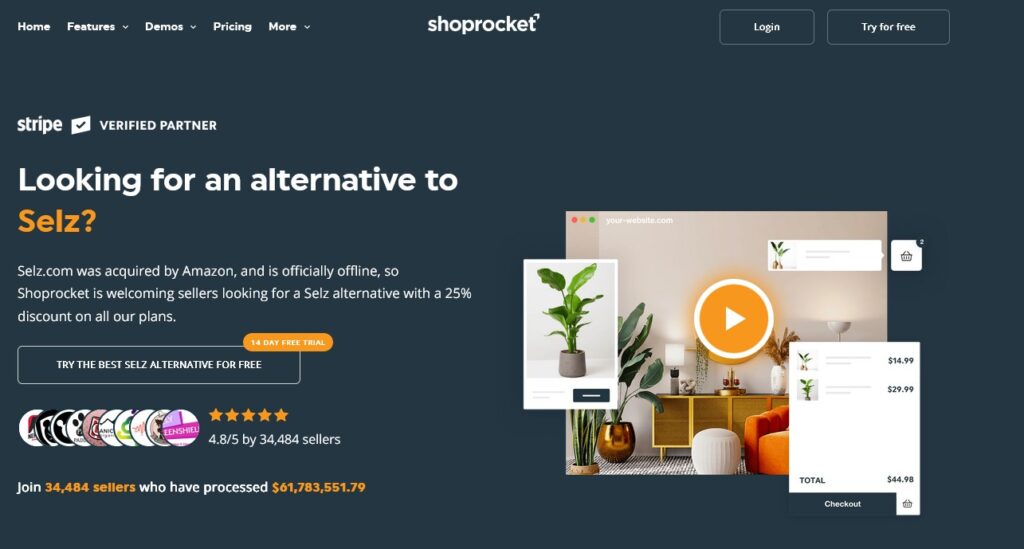
Ryan’s Advice: Excellent for entrepreneurs who want a customizable store with various payment options.

Best Features for Digital Product Marketplaces
- Custom Storefronts: Design your store to match your brand.
- Multiple Payment Options: Accept payments through PayPal, credit cards, and more.
- Digital Delivery: Automate the delivery of digital products.
- Integrated Marketing Tools: Use email and social media marketing to promote your store.
- Analytics and Reporting: Track sales and customer data with detailed reports.
Product Pros and Cons
Pros:
- Highly customizable stores
- Wide range of payment options
- Automated digital delivery
- Integrated marketing tools
- Strong analytics and reporting
Cons:
- Transaction fees on some plans
- Requires some technical skills for customization

User Experiences and Case Studies
- Entrepreneur: Launched a digital product store, increasing sales by 70% within three months.
- Small Business: Used Selz’s marketing tools to drive traffic and grow their customer base by 40%.
- Freelancer: Created a custom store for selling digital services, leading to increased client acquisition.
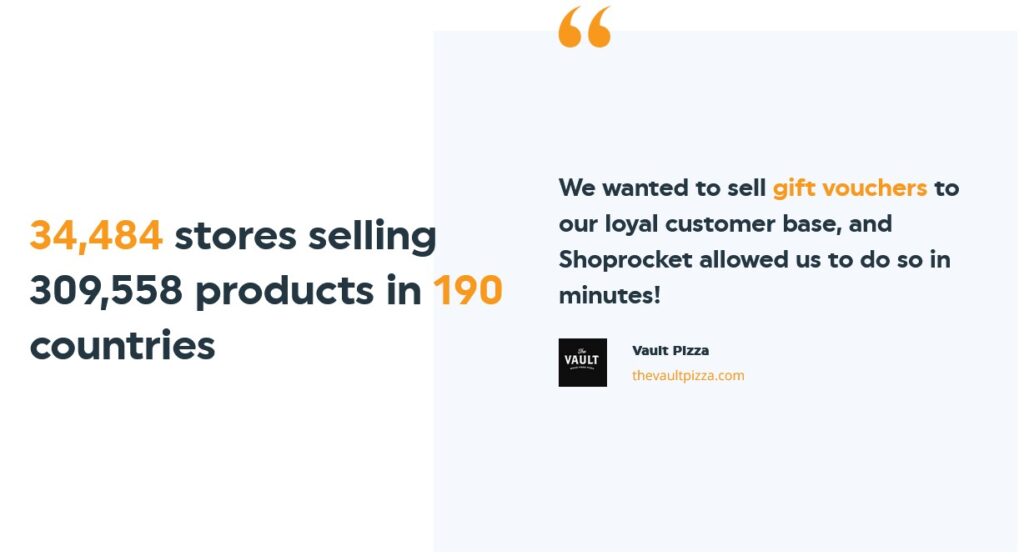
Pricing and Subscription
- Standard Plan: $26/month, includes all essential features.
- Pro Plan: $53/month, adds advanced features and lower transaction fees.
- Business Plan: $179/month, for high-volume sellers with premium support.
5. SendOwl
Best For: Digital product sellers needing flexible payment and delivery options.
Best Features: Secure digital delivery and multiple payment gateways.
Product Description: SendOwl is a robust Digital Product Marketplaces that focuses on secure digital product delivery and flexible payment options.
It’s ideal for sellers who need a reliable platform for selling digital downloads with various payment methods.

Ryan’s Advice: Ideal for digital product sellers who prioritize secure delivery and flexible payment options.

Best Features for Digital Product Marketplaces
- Secure Digital Delivery: Ensure products are delivered securely to customers.
- Multiple Payment Gateways: Accept payments via PayPal, Stripe, Bitcoin, and more.
- Product Upsells: Increase revenue with upsell options at checkout.
- Affiliate Marketing: Built-in tools for managing affiliate programs.
- Abandoned Cart Recovery: Recover lost sales with automated email follow-ups.
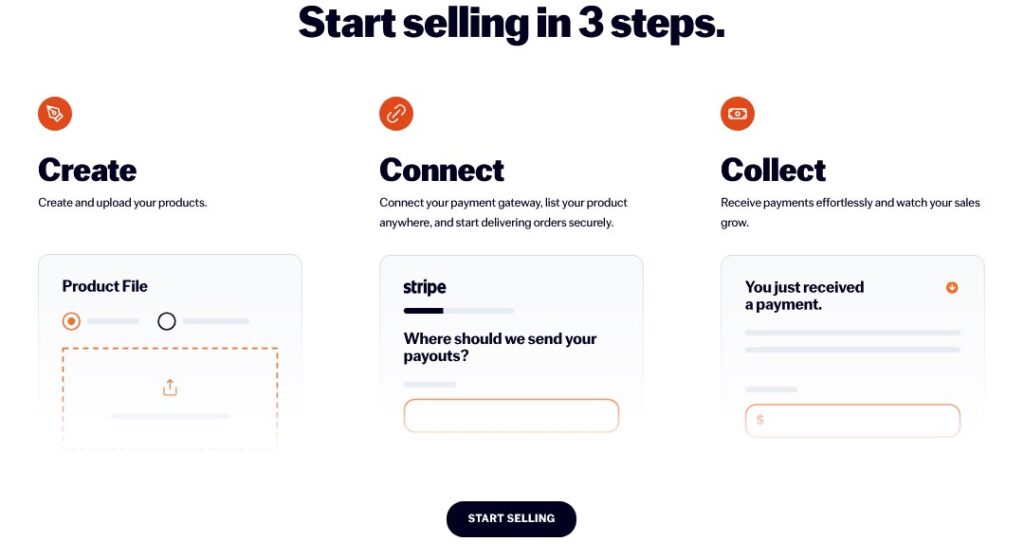
Product Pros and Cons
Pros:
- Secure and reliable digital delivery
- Supports various payment gateways
- Effective upsell options
- Affiliate marketing tools included
- Automated cart recovery
Cons:
- Limited design customization
- Basic reporting features
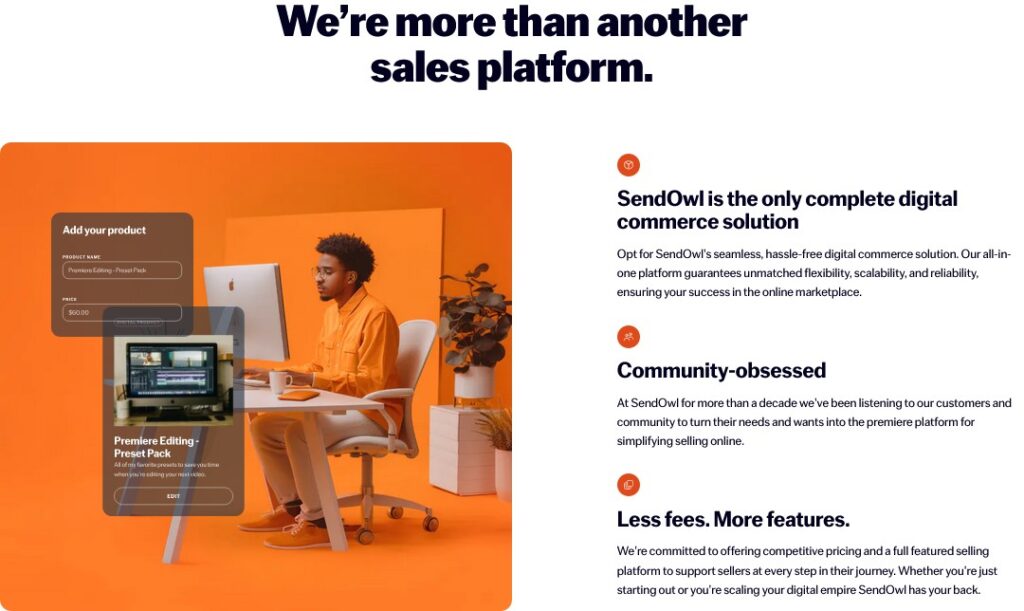
User Experiences and Case Studies

- Software Developer: Used SendOwl to sell software licenses, reducing piracy and increasing revenue by 50%.
- Artist: Sold digital art securely, ensuring high customer satisfaction and repeat purchases.
- Author: Marketed ebooks with affiliate programs, boosting sales through word-of-mouth promotion.
Pricing and Subscription
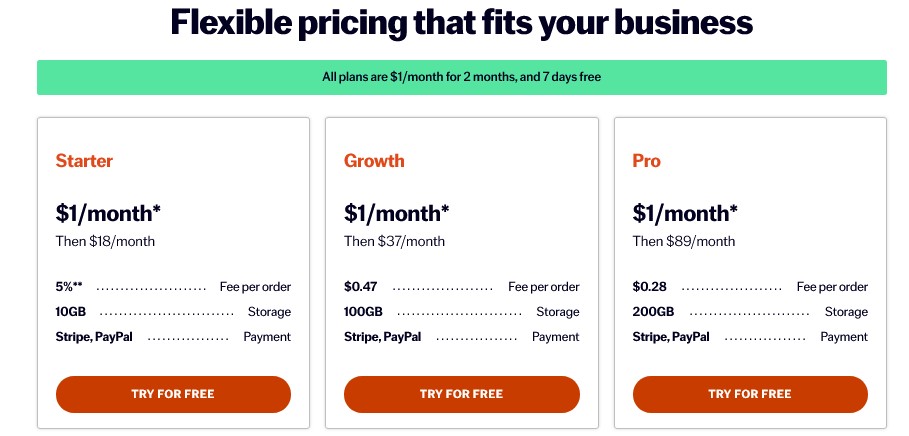
- Starter Plan: $18/month, includes essential features and secure delivery.
- Growth Plan: $37/month, adds upsells and affiliate marketing.
- Pro Plan: $89/month, includes advanced features like cart recovery.
Analyzing Marketing Tools and Strategies on Digital Product Marketplaces in 2025
Marketing tools and strategies are crucial for maximizing the potential of Digital Product Marketplaces.
In 2025, these platforms offer various tools and techniques to help sellers boost visibility and sales.
- Email Marketing: Many marketplaces provide built-in email marketing tools that allow sellers to reach out to customers with personalized offers, updates, and newsletters.
- Social Media Integration: Platforms integrate with social media channels, making it easier for sellers to promote their products and reach a broader audience.
- SEO Optimization: Digital product marketplaces offer SEO tools that help sellers optimize their product listings for search engines, ensuring better visibility.
- Affiliate Programs: Sellers can leverage affiliate marketing tools to expand their reach by allowing others to promote their products in exchange for a commission.
- Discount and Promotion Tools: Built-in tools for creating discount codes and promotions can drive sales and attract new customers.

Step-by-Step Guide to Setting Up a Seller Account and Listing Products on Digital Product Marketplaces in 2025
Setting up a seller account and listing products on a Digital Product Marketplaces in 2025 is a straightforward process, but attention to detail can significantly impact your success.
- Sign Up for an Account: Begin by selecting a digital product marketplace that aligns with your business needs. Visit the platform’s website and sign up for a seller account.
- Complete Your Profile: Fill out your seller profile with relevant information about your business, including contact details, business description, and payment information.
- Create Your Storefront: Customize your storefront by choosing a template, adding your brand logo, and writing a compelling store description.
- List Your Products: Upload your digital products, including high-quality images, detailed descriptions, pricing, and download instructions. Ensure your listings are SEO-optimized.
- Set Up Payment and Shipping Options: Configure your payment gateways and delivery methods, ensuring that customers have a seamless purchasing experience.
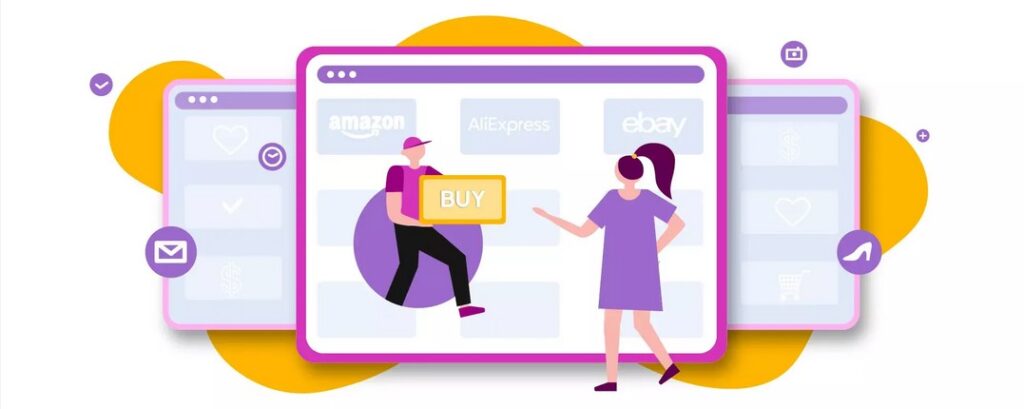
Expert Tips on Maximizing Sales and Visibility on Digital Product Marketplaces in 2025
Maximizing sales and visibility on Digital Product Marketplaces requires a combination of strategic planning and effective use of available tools.

- Optimize Product Listings: Ensure your product titles, descriptions, and tags are optimized for search engines and the marketplace’s internal search.
- Leverage Email Marketing: Regularly communicate with your customers through email campaigns, offering promotions, updates, and new product announcements.
- Use Social Proof: Display customer reviews and ratings prominently on your product pages to build trust and credibility.
- Run Promotions and Discounts: Periodically offer discounts and run promotions to attract new customers and encourage repeat purchases.
- Participate in Affiliate Programs: Expand your reach by enrolling in affiliate programs and allowing others to promote your products.
Case Study: A Successful Digital Product Seller on a Leading Marketplace in 2025
Understanding the journey of a successful seller on a Digital Product Marketplaces can provide valuable insights and inspiration.
Case Study Overview: A freelance photographer decided to sell digital photo presets on Etsy, focusing on providing high-quality, niche-specific products.
By leveraging Etsy’s built-in SEO tools, the photographer optimized her product listings with targeted keywords. She also utilized Etsy’s marketing tools to run targeted ad campaigns and send promotional emails to her followers.
Results:
- Increased Visibility: The optimized product listings consistently ranked high in search results, driving significant traffic to her store.
- Higher Conversion Rates: The use of social proof, including customer reviews and high-quality images, contributed to a 30% increase in conversion rates.
- Revenue Growth: Through strategic promotions and discounts, the photographer saw a 50% increase in sales during the first six months of 2025.

Best Practices for Using Digital Product Marketplaces
To maximize the effectiveness of your Digital Product Marketplaces, consider the following best practices:
- Product Presentation: Ensure your digital products are well-presented with high-quality images, detailed descriptions, and clear pricing.
- Marketing Strategy: Use the platform’s built-in marketing tools to promote your products through email campaigns, discounts, and affiliate marketing.
- Customer Engagement: Engage with customers through reviews, social media, and direct communication to build loyalty and repeat sales.

Common Mistakes to Avoid
When using Digital Product Marketplaces, it’s essential to avoid common pitfalls that could hinder your success:
- Poor Product Presentation: Low-quality images and unclear descriptions can lead to lower sales. Ensure your products are well-presented.
- Neglecting Marketing: Failing to leverage marketing tools can result in missed opportunities. Regularly update your marketing strategies to keep your audience engaged.
- Ignoring Analytics: Not using analytics to track performance can lead to missed insights. Regularly review your analytics to optimize your strategy.

The Future of Digital Product Marketplaces
The landscape of Digital Product Marketplaces is continuously evolving, with several trends shaping the future:
- AI and Automation: Expect to see more AI-driven features that automate tasks like product listing optimization, customer support, and marketing campaigns.
- Blockchain Integration: Blockchain technology could revolutionize digital product sales by enabling secure, transparent transactions and digital rights management.
- Enhanced Analytics: As platforms become more sophisticated, expect deeper insights from analytics tools to help sellers refine their strategies.
FAQ Section
Q1: What are Digital Product Marketplaces?
A: These are online platforms where creators and businesses can sell digital products such as ebooks, software, courses, and music.
Q2: Can Digital Product Marketplaces help me reach a global audience?
A: Yes, most platforms support multiple currencies and payment methods, allowing you to sell to customers worldwide.
Q3: Which Digital Product Marketplaces are best for small businesses?
A: Gumroad and Selz are both excellent choices for small businesses due to their affordability and ease of use.
Q4: What should I consider when choosing a Digital Product Marketplaces?
A: Consider key features like payment processing, marketing tools, and customer support, as well as the platform’s pricing and scalability.
Q5: Do these platforms charge transaction fees?
A: Yes, most platforms charge transaction fees or listing fees, so it’s important to review the pricing structure before choosing a platform.




